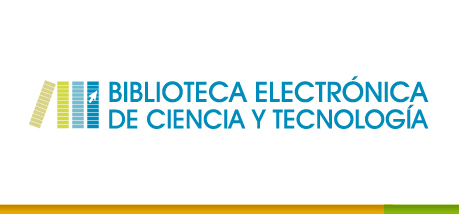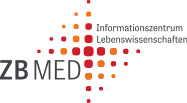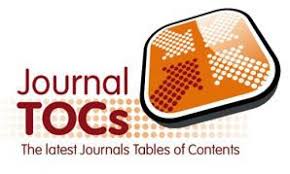Logística inversa usando simulacion en la recolección de envases de plaguicidas : estado del arte
Palabras clave:
Logística Inversa, simulación, envases de plaguicidas.Resumen
Este artículo tiene como objetivo presentar una visión sobre las investigaciones que se han adelantado en los diferentes aspectos y aplicaciones de la Logística Inversa (LI), y aquellas herramientas y nuevos campos del conocimiento donde se puede aplicar LI. La revisión se llevó a cabo bajo tres temas de estudio: LI en empresas, Simulación de LI y Procesos de Recolección, Tratamiento y Disposición de Envases de Plaguicidas, este último viéndolo desde un concepto de recuperación o reciclaje de producto fuera de uso. La revisión se realiza a través del análisis de contenido de bibliografía publicada. Se hizo uso de varias bases de datos para la búsqueda de artículos de investigación relacionados con los temas bajo estudio, los cuales fueron clasificados de acuerdo al tema tratado. En la revisión bibliográfica se puede evidenciar que el 50% de la bibliografía consultada corresponde a LI aplicada o desarrollada en empresas, por medio de estudios tanto cualitativos como cuantitativos. Además, el 32% de los artículos revisados se enfoca en la simulación de LI, pero en la mayoría de casos no se utiliza como herramienta principal de investigación, sino como una herramienta de verificación y validación de la misma. Finalmente, las investigaciones actuales en cuanto a tratamiento y disposición de envases de plaguicidas carecen de los conceptos de LI como proceso.
This article has as an objective to present a vision about the research made in the different aspects and applications of the inverse logistics (LI) and the tools and new fields in which the LI knowledge may be applied. The review was conducted under three areas of study: Reverse Logistics (RL) in companies, RL and Process Simulation, Collection, Treatment and Disposal of Pesticide Containers, the latter seeing it from a concept of recovery or recycling products out of use. The review is done through content analysis of published literature. Use was made of multiple databases to search for research articles related to the topics under study, which were classified according to the subject. In the literature review, it can be demonstrated that 50% of the consulted bibliography corresponds to the LI applied or developed in companies, through studies either qualitative and quantitative. Furthermore, 32% of the reviewed articles the focus of the research is based on the simulation of LI, but in most cases it is not used as a main tool in the research, but as a tool of verification and validation of it. Finally, the current research about treatment and final disposal of pesticides lack of the concepts of LI as a process.
Descargas
Citas
ADLMAIER, Diogo., and SELLITTO, Miguel Afonso. Embalagensretornáveis para transporte de bensmanufaturados: umestudo de caso em logística reversa. Revista Produção, 2007, vol.
, no 2, p. 395-406.
ÁLVAREZ-GIL, Ma José, et al. Reverse logistics, stakeholders’ influence, organizational slack, and managers’ posture. Journal of Business Research, 2007, vol. 60, no 5, p. 463-473.
AMINI, Mehdi et al. Designing a reverse logistics operation for short cycle time repair services. International Journal of Production Economics, 2005, vol. 96, no 3, p. 367-380.
AMINI, Mohammad M., and RETZLAFF-ROBERTS, Donna. Reverse logistics process reengineering: improving customer service quality. Issues in Supply Chain Management, 1999, vol. 5, no 1, p. 31-41.
AQIEL DALVIE, Mohamed., AFRICA, Algernon., and LONDON, Leslie. Disposal of unwanted pesticides in Stellenbosch, South Africa. Science of the total environment, 2006, vol. 361, no 1, p. 8-17.
BARROS, A., DEKKER, R., and SCHOLTEN, V.A two-level network for recycling sand: A case study. European Journal of Operational Research. 2011, vol. 110, p. 199-214.
BIEHL, Markus., PRATER, Edmund., and REALFF, Matthew J. Assessing performance and uncertainty in developing carpet reverse logistics systems. Computers & Operations Research, 2007, vol. 34, no 2, p. 443-463.
BUCZYŃSKA, Alina., and SZADKOWSKA-STAŃCZYK, Irena. Identification of health hazards to rural population living near pesticide dump sites in Poland. International Journal of Occupational Medicine and Environmental Health, 2005, vol. 18, no 4, p. 331-339.
BYRD, Terry Anthony., and DAVIDSON, Nancy W. Examining possible antecedents of IT impact on the supply chain and its effect on firm performance. Information & Management, 2003, vol. 41, no 2, p. 243-255.
CARTER, Craig., and ELLRAM, Lisa. Reverse logistics--a review of the literature and framework for future investigation. Journal of business logistics, 1998, vol. 19, no. 1, p. 85-102.
CENTNER, Terence., and GUNTER, Lewell. Financing the disposal of unwanted agricultural pesticides. Environment international, 1999, vol. 25, no 5, p. 635-646.
CHAVES, Gisele de Lorena Diniz., and BATALHA, Mário Otávio. Os consumidores valorizam a coleta de embalagens recicláveis: Um estudo de caso da logística reversa em uma rede de hipermercados. Gestão & Produção, 2006, vol. 13, no 3, p. 423-434.
CHE, Zhen-Hua., CHIANG, Tzu-An., and KUO, Yu-Chun. Multi-echelon reverse supply chain network design with specified returns using particle swarm optimization. International Journal of Innovative Computing, Information and Control, 2012, vol. 8, no. 10, p. 6719-6731.
CLARKE, E. E. K., et al. The problems associated with pesticide use by irrigation workers in Ghana. Occupational Medicine, 1997, vol. 47, no 5, p. 301-308.
CONTRERAS, Eduin., FRAILE, Ana., and SILVA., Julián. Diseño de un sistema de logística inversa parala recolección de envases y empaques vacíos de Plaguicidas. Revista Ingeniería Industrial. 2013, vol. 12, no. 2, p. 29-42.
DAMALAS, Christos., TELIDIS, Georgios., and THANOS, Stavros. Assessing farmers’ practices on disposal of pesticide waste after use. Science of the total environment, 2008, vol. 390, no 2, p. 341-34.
Decreto 4741/2005. Por el cual se reglamenta parcialmente la prevención y manejó de los residuos o desechos peligrosos generados en el marco de la gestión integral. Diario Oficial de la República de Colombia, 30 de Diciembre de 2005, núm. 46.137, 29p.
DEMAJOROVIC, Jacques, et al. Logística reversa: como as empresas comunicam o descarte de baterias e celulares.Revista de Administração de Empresas, 2012, vol. 52, no 2.
DENNY, Robert. How to: Dispose of pesticide containers. Grounds Maintenance. 2001, vol. 36, no. 4, p. 40-51.
DIABAT, Ali, et al. An optimization model for product returns using genetic algorithms and artificial immune system. Resources, Conservation and Recycling, 2013a, vol. 74, no. 1, p. 156-169.
DIABAT, Ali, et al. Strategic closed-loop facility location problem with carbon market trading. IEEE Transactions on Engineering Management, 2013b, vol. 60, no. 2, p. 398-408.
DOWLATSHAHI, Shad. Developing a theory of reverse logistics. Interfaces, 2000, vol. 30, no 3, p. 143-155.
D’SOUZA, Clare, et al. Green decisions: demographics and consumer understanding of environmental labels. International Journal of Consumer Studies, 2007, vol. 31, no 4, p. 371-376.
ELFVENDAHL, Sara, et al. Pesticide pollution remains severe after cleanup of a stockpile of obsolete pesticides at Vikuge, Tanzania. AMBIO: A Journal of the Human Environment, 2004, vol. 33, no 8, p. 503-508.
ELLINGER, Alexander E., LYNCH, Daniel F., and HANSEN, John D. Firm size, web site content, and financial performance in the transportation industry. Industrial Marketing Management, 2003, vol. 32, no 3, p. 177-185.
FARRERA, René, et al. Educación para el manejo y uso de plaguicidas en los municipios rurales: Jáuregui y Vargas, Táchira. Geoenseñanza, 2002, vol. 7, no 1-2, p. 38-53.
FERNÁNDEZ, Isabel., PRIORE, Paolo., and GÓMEZ, Alberto. Análisis entre distintas alternativas de recuperación de valor a través de la simulación. En X Congreso de Ingeniería de Organización. 2006.
FLEISCHMANN, Moritz, et al. Quantitative models for reverse logistics: a review. European journal of operational research, 1997, vol. 103, no 1, p. 1-17.
FRAJ, Elena., and MARTINEZ, Eva. Ecological consumer behaviour: an empirical analysis. International Journal of Consumer Studies, 2007, vol. 31, no 1, p. 26-33.
GALLO, Mosè., MURINO, Teresa., and ROMANO, Elpidio. The Simulation of Hybrid Logic in Reverse Logistics Network. Selected Topics in System Science and Simulation Engineering, 2010, p. 378-384.
GONZÁLEZ-TORRE, Pilar L., and ADENSO-DÍAZ, Belarmino. Reverse logistics practices in the glass sector in Spain and Belgium. International Business Review, 2006, vol. 15, no 5, p. 527-546.
GUERRA, L., MURINO, T., and ROMANO, E. Reverse Logistics for Electrical and Electronic Equipment: a modular simulation model. Proceeding of the 8th Recent Advances in System Science and Simulation in Engineering ICOSSSE, 2009, p. 307-312.
GUIDE, Daniel., and VAN WASSENHOVE, Luk. OR FORUM—The evolution of closed-loop supply chain research. Operations Research, 2009, vol. 57, no 1, p. 10-18.
HAMZA, Heba., WANG, Yan., and BIDANDA, Bopaya. Modeling total cost of ownership utilizing interval-based reliable simulation technique in reverse logistics management. En IIE Annual conference and Exposition. 2007. p. 19-23.
HAYLAMICHEAL, Israel D., and DALVIE, Mohamed A. Disposal of obsolete pesticides, the case of Ethiopia. Environment international, 2009, vol. 35, no 3, p. 667-673.
HIRSCH, Bernd E., KUHLMANN, Thorsten., and SCHUMACHER, Jens. Logistics simulation of recycling networks. Computers in Industry, 1998, vol. 36, no 1, p. 31-38
HOSSEINZADEH, Mostafa., and ROGHANIAN, Emad. An Optimization Model for Reverse Logistics Network under Stochastic Environment Using Genetic Algorithm. International Journal of Business and Social Science, 2012, vol. 3, no. 12, p. 1-17.
HU, Tung-Lai., SHEU, Jiuh-Biing., and HUANG, Kuan-Hsiung. A reverse logistics cost minimization model for the treatment of hazardous wastes. Transportation Research Part E: Logistics and Transportation Review, 2002, vol. 38, no 6, p. 457-473.
IBITAYO, Olurominiyi O. Egyptian farmers’ attitudes and behaviors regarding agricultural pesticides: implications for pesticide risk communication. Risk analysis, 2006, vol. 26, no 4, p. 989-995.
JAYANT, A., GUPTA, P. and GARG, S.K.Design and Simulation of Reverse LogisticsNetwork: A Case Study. Proceedings of the World Congress on Engineering. Julio 2011, vol. 1.
JAYARAMAN, V., GUIDE J. V.D.R., and SRIVASTAVA, R., A closed loop logistics model for use within a recoverable manufacturing environment. Journal of Operational Research Society. 1999, vol. 50, no. 5, p. 497–509.
KARA, S., RUGRUNGRUANG, F., and KAEBERNICK, H. Simulation modelling of reverse logistics networks. International Journal of Production Economics, 2007, vol. 106, no 1, p. 61-69.
KÖHNE, John Maximilian., KÖHNE, Sigrid., and ŠIMŮNEK, Jirka. A review of model applications for structured soils: b) Pesticide transport. Journal of Contaminant Hydrology, 2009, vol. 104, no 1, p. 36-60.
KONDOH, Shinsuke., TATENO, Toshitake., and MATSUMOTO, Mitsutaka. Multi-agent simulation of component reuse focusing on variations in user preference. CIRP Journal of Manufacturing Science and Technology, 2009, vol. 1, no 4, p. 287-293.
KORCHI, A., and MILLET, D.Designing a sustainable reverse logistics channel: the 18 generic structuresframework. Journal of Cleaner Production. 2011, vol. 19, p. 588-597.
KRIPPENDORFF, Klaus. Content analysis: An introduction to its methodology. Sage, 2012.
KWAN, Tan A., and KUMAR, A. A decision-making model for reverse logistics in the computer industry.International Journal of Logistics Management. 2006, vol. 17, no. 3, p. 331 - 354.
LADEIRA, Wagner Junior., MAEHLER, Alisson Eduardo., and NASCIMENTO, Luís Felipe Machado do. Logística reversa de defensivos agrícolas: fatores que influenciamnaconsciência ambiental de agricultores gaúchos e mineiros. Revista de Economia e Sociologia Rural, 2012, vol. 50, no 1, p. 157-174.
LEE, C. K. M., and CHAN, T. M. Development of RFID-based reverse logisticssystem. Expert Systems with Applications, 2009, vol. 36, no 5, p. 9299-9307.
LIU, Hong., ZHANG, Qishan., and WANG, Wenping. Research on location-routing problem of reverse logistics with grey recycling demands based on PSO. Grey Systems: Theory and Application, 2011, vol. 1, no 1, p. 97-104.
LOGOŽAR, Klavdij., RADONJIČ, Gregor., and BASTIČ, Majda. Incorporation of reverse logistics model into in-plant recycling process: A case of aluminium industry. Resources, Conservation and Recycling, 2006, vol. 49, no 1, p. 49-67.
MARASCO, Alessandra. Third-party logistics: a literature review. International Journal of Production Economics, 2008, vol. 113, no 1, p. 127-147.
MATSUMOTO, Mitsutaka. Development of a simulation model for reuse businesses and case studies in Japan. Journal of Cleaner Production, 2010, vol. 18, no 13, p. 1284-1299.
MILES, J. R. W., HARRIS, C. R., and MORROW, D. C. Assessment of hazards associated with pesticide container disposal and of rinsing procedures as a means of enabling disposal of pesticide containers in sanitary landfills. Journal of Environmental Science & Health Part B,
, vol. 18, no 3, p. 305-315.
MUTHA, Akshay., and POKHAREL, Shaligram. Strategic network design for reverse logistics and remanufacturing using new and old product modules. Computers & Industrial Engineering, 2009, vol. 56, no 1, p. 334-346.
PARADA, José. Incorporación de la Logística Inversa en la Cadena de Suministros y su influencia en la estructura organizativa de las empresas. Universitat de Barcelona, 2010.
POKHAREL, Shaligram., and MUTHA, Akshay. Perspectives in reverse logistics: A review. Resources, Conservation and Recycling, 2009, vol. 53, no 4, p. 175-182.
RAVI, V., and SHANKAR, Ravi. Analysis of interactions among the barriers of reverse logistics. Technological Forecasting and Social Change, 2005, vol. 72, no 8, p. 1011-1029.
RAVI, V., SHANKAR, Ravi., and TIWARI, M. K. Analyzing alternatives in reverse logistics for endof-life computers: ANP and balanced scorecard approach. Computers & Industrial Engineering, 2005, vol. 48, no 2, p. 327-356.
ROGERS, Dale. Glossary. Reverse Logistics Executive Council. 2007. [On line]: http://www.rlec.org/glossary.html.
ROGERS, Dale S., MELAMED, Benjamin., and LEMBKE, Ronald S. Modeling and Analysis of Reverse Logistics. Journal of Business Logistics, 2012, vol. 33, no 2, p. 107-117.
ROGERS, Dale S., and TIBBEN-LEMBKE, Ronald S. Going backwards: reverse logistics trends and practices. Pittsburgh, PA: Reverse LogisticsExecutive Council, 1999.
RUBIO, Sergio., CHAMORRO, Antonio., and MIRANDA, Francisco J. Characteristics of theresearchon reverse logistics (1995–2005). International Journal of Production Research, 2008, vol. 46, no 4, p. 1099-1120.
RUBIO, Sergio. El sistema de logística inversa en la empresa: análisis y aplicaciones. Universidad de Extremadura. Tesis doctoral, 2003.
SCHULTMANN, Frank., ZUMKELLER, Moritz., and RENTZ, Otto. Modeling reverse logistic tasks within closed-loop supply chains: An example from the automotive industry. European Journal of Operational Research, 2006, vol. 171, no 3, p. 1033-1050.
SEITZ, Margarete A. A critical assessment of motives for product recovery: the case of engine remanufacturing. Journal of Cleaner Production, 2007, vol. 15, no 11, p. 1147-1157.
SILVA, Diogo et al. Comparison of disposable and returnable packaging: a case studyof reverse logistics in Brazil. Journal of Cleaner Production, 2013, vol 47, p. 377-387.
SINZOGAN, A. A. C., et al. Farmers’ knowledge and perception of cotton pests and pest control practices in Benin: results of a diagnostic study. NJAS-Wageningen Journal of Life Sciences, 2004, vol. 52, no 3, p. 285-303.
SIVANESAN, S. D., et al. Genotoxicity of pesticide waste contaminated soil and its leachate. Biomedical and Environmental Sciences, 2004, vol. 17, no 3, p. 257-265.
SRIVASTAVA, Samir K. Network design for reverse logistics. Omega, 2008, vol. 36, no 4, p. 535-548.
STOCK, James R., and MULKI, Jay P. Product returns processing: an examination of practices of manufacturers, wholesalers/distributors, and retailers. Journal of Business Logistics, 2009, vol. 30, no 1, p. 33-62.
STOCK, James. Reverse Logistics. Oak Brook: Council of Logistics Management.1992.
TAN, Albert Wee Kwan., and KUMAR, Arun. A decision-making model for reverse logistics in the computer industry. International Journal of Logistics Management, 2006, vol. 17, no 3, p. 331-354.
TUZKAYA, Gülfem., GÜLSÜN, Bahadır., and ÖNSEL, Şule. A methodology for the strategic design of reverse logistics networks and its application in the Turkish white goods industry. International Journal of Production Research, 2011, vol. 49, no 15, p. 4543-4571.
VEIGA, Marcelo Motta. Flaws in Brazilian take-back program for pesticide containers in a small rural community. Management Research News, 2008, vol. 32, no 1, p. 62-77.
WADHWA, S., MADAAN, J., and CHAN, F. T. S. Flexible decision modeling of reverse logistics system: A value adding MCDM approach for alternative selection. Robotics and ComputerIntegrated Manufacturing, 2009, vol. 25, no 2, p. 460-469.
WILCOX, William, et al. A Markov model of liquidity effects in reverse logistics processes: The effects of random volume and passage. International Journal of Production Economics, 2011, vol. 129, no 1, p. 86-101.
WRIGHT, Robert E., et al. Recycling and Reverse Logistics. Journal of Applied Business & Economics, 2011, vol. 12, no 5, p. 9-20.
YIN, Robert K. Case study research: Design and methods. Sage, 1994.
Descargas
Publicado
Número
Sección
Licencia
Revista Ingeniería Industrial by Revista Ingeniería Industrial is licensed under a Creative Commons Reconocimiento 4.0 Internacional License. Creado a partir de la obra en revistas.ubiobio.cl/index.php/RI/. Puede hallar permisos más allá de los concedidos con esta licencia en http://revistas.ubiobio.cl/index.php/RI/about/

















